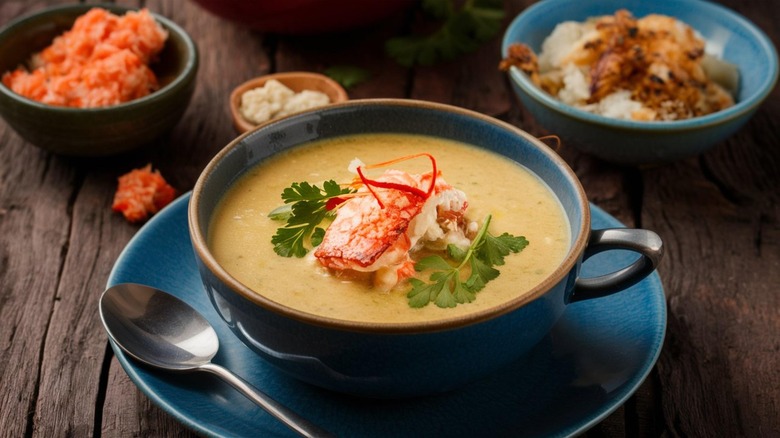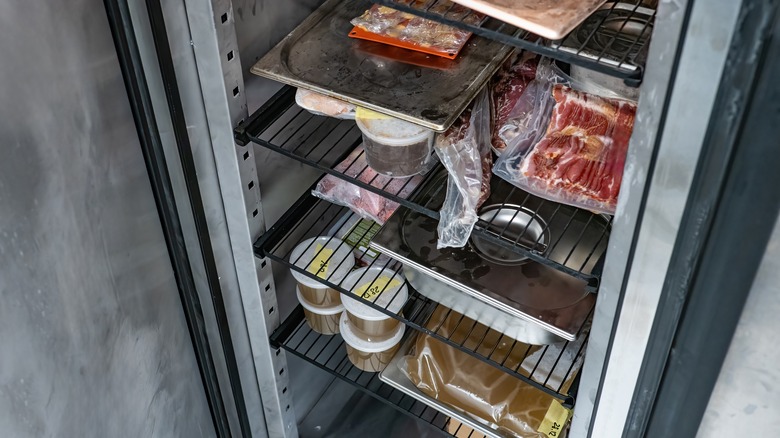The Red Flag You Should Be Aware Of Before Ordering Lobster Bisque At A Restaurant
Chefs can be a crafty bunch. In the restaurant industry, margins are so small that making the most of what you have available in the kitchen is paramount. When it comes to fish, this is especially true. If you've ever had fish soup – a chowder or bisque, for example — you likely sampled the delights of a restaurant's leftovers. Bones go into stock, trimmings go toward making fishcakes or rillettes. This is not a bad thing; if anything, it's the sign of a resourceful, creative chef.
But if there's evidence that a restaurant isn't using its own scraps, that can be a red flag. Take lobster bisque, for example. Though it's undoubtedly a luxurious dish, defined by its big, savory flavors and rich, creamy mouthfeel, it's actually a dish that — like much of the best of French cookery — leans on resourcefulness and leftovers.
If you're at a restaurant and you see the soup on a menu, quickly scan the rest of the offerings. If there's no lobster dish in sight, think twice before ordering the bisque. It should really be made with leftover lobster shells, but if a restaurant doesn't serve lobster, chances are the bisque you're about to enjoy has either come from a can or wasn't fresh but, rather, frozen. Or its has no lobster in it at all.
Some other red flags to look out for
There are other red flags to watch out for on restaurant menus, so keep a weather eye. One that should be obvious before you even walk in the door is an unnecessarily expansive menu. If the menu is biblical in scale, filled with photos of food and insistent on how incredible its contents taste, you'd be wise to approach it with a little skepticism. Good food speaks for itself, after all.
The same goes for excessive variety — if the place has Indian butter chicken on the menu alongside spinach and ricotta lasagna, with a sushi section toward the back page, it's unlikely that any of it is going to be particularly special. When it comes to seafood restaurants in particular, it's also a sign that the likelihood is, whatever you're about to eat has been frozen — not what most people expect when they go out for dinner.
Instead, look for restaurants with a more focused menu: a sign that whoever's in the kitchen actually knows about, and crucially cares about, the kind of cooking they do there. If that menu changes throughout the year, even better — it's a sign that the ingredients the restaurant uses are important to it. A kitchen that puts quality front and center, whether that's in its produce or its fish, is a kitchen you can trust to deliver a great meal.


